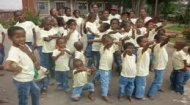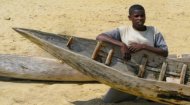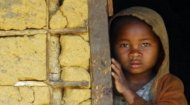|
The daily life for children in Madagascar varies significantly depending on whether they reside in an urban centre like the capital Antananarivo, or a remote rural village. For many, particularly in the countryside where the vast majority of Malagasy live, the day begins before dawn. Chores are an integral part of their routine, contributing to the household's survival. Young girls often assist with fetching water from communal wells or rivers, sometimes travelling long distances carrying heavy buckets on their heads. Boys might be tasked with gathering firewood, tending to livestock, or helping in the family’s agricultural plot, be it rice paddies, vanilla plantations, or vegetable gardens. Family is the bedrock of Malagasy society, and children are raised within a strong, often extended, family structure. The concept of Fihavanana, a deep sense of kinship, solidarity, and mutual assistance, permeates every aspect of life. Grandparents, aunts, uncles, and cousins often live together or in close proximity, playing active roles in a child's upbringing. Respect for elders and ancestors is paramount, instilled from a very young age. Children learn the importance of community, sharing, and collective well-being. This tightly-knit social fabric provides a crucial support system, offering comfort and security in a resource-scarce environment, although it also means that the burdens of poverty are often shared among many. Family gatherings, ceremonies, and storytelling are vital for transmitting cultural knowledge, moral values, and the rich oral history of the Malagasy people. Religion and traditional beliefs are deeply intertwined within the Malagasy worldview, profoundly influencing children's lives and upbringing. While a significant portion of the population adheres to Christianity (both Catholicism and various Protestant denominations), ancestor veneration remains a powerful and pervasive cultural practice. Many Malagasy blend Christian faith with traditional animist beliefs, where ancestors are seen as mediators between the living and God. Children are often exposed to religious ceremonies, Sunday school, and traditional rituals from a young age, learning prayers and songs that reflect this unique spiritual fusion. These beliefs provide a moral compass, community cohesion, and a framework for understanding life and death, shaping a child's sense of identity and place in the world. In some coastal regions, particularly in the north and west, a smaller percentage of the population practices Islam, adding another layer to the island's diverse spiritua cultural landscape. |
Children in Madagascar |
Children in Madagascar |
Children in Madagascar | Children in Madagascar |
|
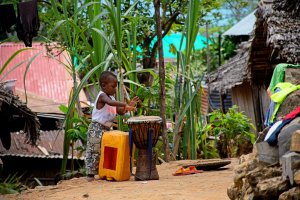 |
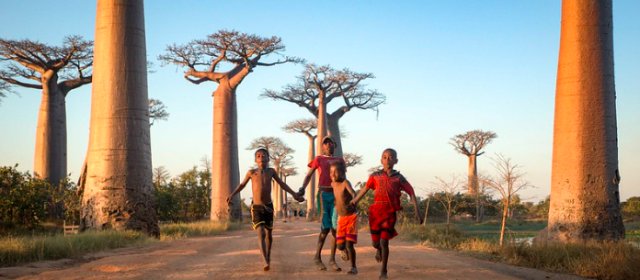
Education is widely valued as a pathway out of poverty, yet access to quality schooling remains a significant challenge for many children in Madagascar. While primary education is nominally free, hidden costs such as uniforms, school supplies, and exam fees often pose insurmountable barriers for the poorest families. Enrollment rates for primary school are relatively high, but they drop sharply at the secondary level, particularly in rural areas where schools are scarce and travel can be difficult. Classrooms are often overcrowded, especially in urban areas, and a severe shortage of qualified teachers, textbooks, and basic facilities like proper sanitation and clean water hinders effective learning. The curriculum, primarily taught in Malagasy and French, can also present challenges for children whose first language is a regional dialect. Despite these obstacles, many children, often with sacrifices by their families, strive to attend school, understanding that education holds the key to a brighter future. For more information, see our article about education for children in Madagascar on our Madagascar profile page. Housing and living conditions for Malagasy children are largely determined by their family's economic status and geographic location. In rural areas, which account for about 60% of the population, homes are typically constructed from local, readily available materials such as wood, woven reeds, mud bricks, or bamboo, often with thatched roofs. These dwellings, while providing shelter, frequently lack basic amenities like electricity, piped water, and adequate sanitation facilities. Access to clean drinking water is a persistent issue, forcing many families to rely on natural sources that may be contaminated. In urban centres, particularly in the sprawling informal settlements around major cities, children often live in densely packed, poorly constructed shanties, facing similar, if not worse, challenges regarding hygiene and sanitation, coupled with increased exposure to crime and pollution. These precarious living conditions contribute significantly to health problems and hinder overall child development. Beyond these fundamental issues, children in Madagascar are increasingly vulnerable to the impacts of climate change. The island is highly susceptible to recurrent natural disasters, including devastating cyclones, prolonged droughts in the south, causing severe food insecurity, and widespread deforestation leading to soil erosion. For example, in June 2021, the southern region of Madagascar was hit by the worst drought in 40 years. These environmental crises displace communities, destroy livelihoods, and exacerbate existing vulnerabilities, pushing already struggling families deeper into poverty. Moreover, children are at risk of exploitation, including trafficking and sexual abuse, particularly those who are orphaned, displaced, or living in extreme poverty. The lack of robust social protection systems leaves many without adequate safeguards, making them easy targets for those seeking to profit from their vulnerability. There are approximately 15.3 million children in Madagascar under the age of 18 and while there are no officials for the number of orphans on the island (although beieved to be around 910,000), 11,000 of them have lost their parents due to AIDS with a national prevalence potentially much higher than previously thought, possibly reaching 2.9% and even 13% in urban areas. Many of these orphans make their way onto the streets of cities such as Antananarivo in search of survival where there are already thousands of children begging there. One eleven year old even described the lifestyle as being lucky; "Sometimes the street vendors let us sleep by their fires. The grannies who sleep on the pavements know us; they know we have our own money and we won't steal from them, so they let us stay." Even those with families have now been forced to abandon school to work to find work. As one youngster put it "What’s the point of doing nothing in school all day when there’s nothing to eat at the end of it?" There are also reports of parents abandoning their children when they can no longer support them, including infant children just left by themselves on the streets. See our separate article on street children in Madagascar on our Madagascar profile page. Despite the array of challenges, children in Madagascar exhibit remarkable resilience and spirit. Communities, with their strong bonds of Fihavanana, often step in to support those in need, and countless local initiatives strive to provide education, nutrition, and protection. International and local non-governmental organisations are working tirelessly to address the root causes of poverty, improve access to healthcare and education, and advocate for children's rights. The above video provides further insights into the life of children in Madagascar. |
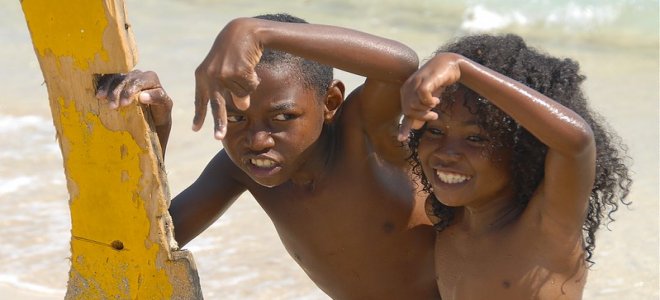
 These responsibilities, while fostering a strong sense of duty and practical skills, can also limit their time for play and, crucially, for schooling. Amidst these duties, children find moments for simple joys: playing traditional games, listening to elders’ stories under the shade of a tree, or simply enjoying the camaraderie of their peers.
These responsibilities, while fostering a strong sense of duty and practical skills, can also limit their time for play and, crucially, for schooling. Amidst these duties, children find moments for simple joys: playing traditional games, listening to elders’ stories under the shade of a tree, or simply enjoying the camaraderie of their peers.


